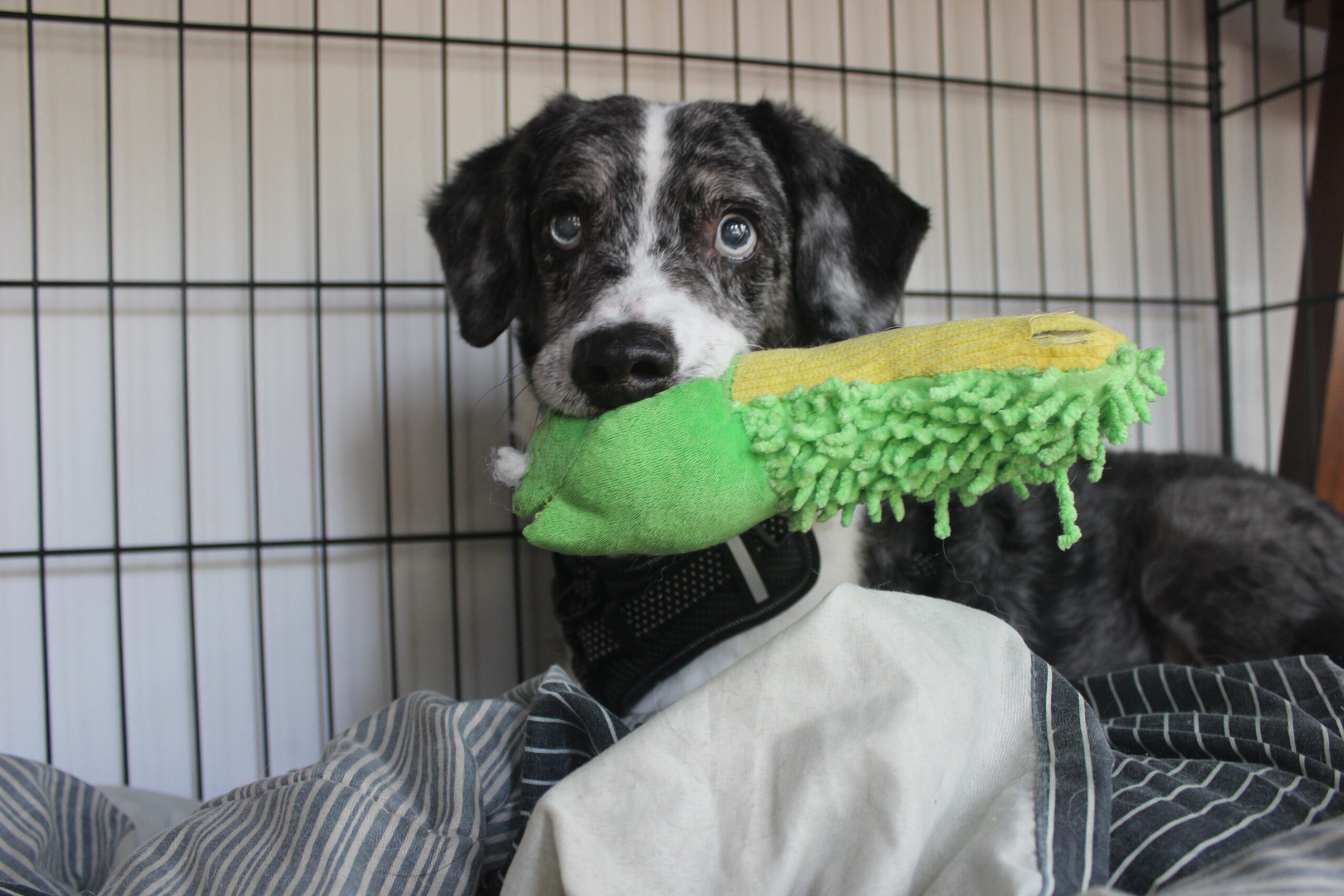
Congratulations on your new four legged family member! We know you are excited to share them with the world but before you do, please take a few moments to learn about a process that will help your pup adjust to their new life with you.
First off, try to remember that any transition can be difficult on a dog. Whether that transition is good or bad, changes in routine often result in stress for our four legged friends. For some, the stress is minor and easily overcome in just a few days. For others, it may take weeks or longer for them to truly feel comfortable in their new home and adjust to the new routine. No matter which category your new pet falls into, or if they are somewhere in between, there is a process you can implement that will help them adapt and set them up to succeed in their new life with you. This process is called the two week shutdown.
Before welcoming your new dog
- Chose a space (ideally a small room or a crate in a corner with an x-pen for more space) that can be dedicated to the new dog, and them alone, for two weeks. This should be near the center of activity in your home but able to be visually blocked off or have the door shut so that your new dog can adjust to the sounds and smells of your home before being fully immersed. This space is going to be the dog’s safe zone.
- Place a bed, food, water, and a couple toys if you wish, in this space for the dog.
Bringing the dog home
- Coming home, it’s important to resist the urge to take your new dog on a shopping spree or to the park or any other location besides home. A walk around the neighborhood is a good way to start introducing your dog to their new routine and burn off a little energy at the same time, if you desire.
- When you get home, the dog should be introduced to the safe zone you have set up for them.
- Allow the dog time to smell everything and explore. You can provide treats and, if you wish, absolutely begin training! Both will help the dog begin to settle in. It’s important not to overdo anything the first couple days. The transition will likely cause mental fatigue and some stress, whether your dog shows signs or not.
- Depending on the dog, and your situation, it is a good idea to keep the dog leashed at all times when not in this space. This includes in the house and when out in the yard to potty. Keep in mind, the dog has no idea who you are or where they are. They do not recognize your home as their home at first, that will come with time. Each dog is different, as is each situation. Keeping the dog on leash inside also allows you to monitor behavior for any possible accidents and make sure they learn the appropriate (and inappropriate) toys. Keeping them leashed in a fenced in yard may seem unnecessary but if your dog is on the shy side, they may not be willing to come to you or go back inside when you want them to, do you want to spend forever trying to catch or lure them back inside? In situations like this, a long training leash is a good option if you want to give the dog a little more freedom than a 6 foot leash allows.
- Start into your normal routine as soon as possible! It’s great if you took a few days off to spend with your new dog but when you eventually do have to go back to work, that is another routine change for your dog and can cause more stress on top of the recent move to your home. If you did take time off, make sure you spend time away from your new dog and leave them on their own. This gets them used to the concept and ensures that they don’t begin life with you assuming that you will constantly be there with them! You can start slowly if you have concerns, only leaving for 10-15 minutes at a time. Make sure to work up the length of time so your dog starts to get used to it. If you start seeing any signs of separation anxiety or anything concerning, please give us a call or email us! We would love to help in any way we can and have plenty of tips to help these kind of situations!
Feeding time
When it comes to meal time, most dogs are very food motivated and love their meals! During the two week shutdown, it is a good idea to make your dog work for their food in some manner or another. You can find a wide selection of food dispensing toys online or at your local pet store. They are several DIY options out there as well. We also have some of our favorites and are happy to discuss them with you! If a food toy isn’t something you want to explore, think about using your dog’s meal ration to start training or obedience commands. Food is likely one of the most important things in your dog’s life. Giving it to them in a bowl is essentially providing them a salary for no work! Any of these options is going to provide a mental workout for your new dog and that is a wonderful thing to ensure they stay happy and healthy!
Exercise
Whether you have a fenced in yard or not, plan on leash walks or just playing fetch, physical exercise is important for your new dog. A tired dog is a happy dog and a tired dog has little or no motivation to inappropriately chew things and be destructive. We already mentioned that it is a good idea to keep your new dog on a leash at all times, even in a fenced in yard. This may not be necessary beyond the first day or two until you see how your dog will react to being outside and you calling them. Leash walks are always recommended, no matter whether your yard is fenced or not. A walk is a good bonding activity especially if there are already other dogs in the home. A walk provides new sniffing opportunities (a form of mental stimulation that is irreplaceable for dogs), and the chance to get to know their new home, including the areas around it. There are many other activities you can do to exercise your dog and the choice is up to you! Keep it fun for both you and your dog and you can’t go wrong!
Again, congratulations on your new family member! Remember, if you have any questions or concerns don’t hesitate to contact us!
